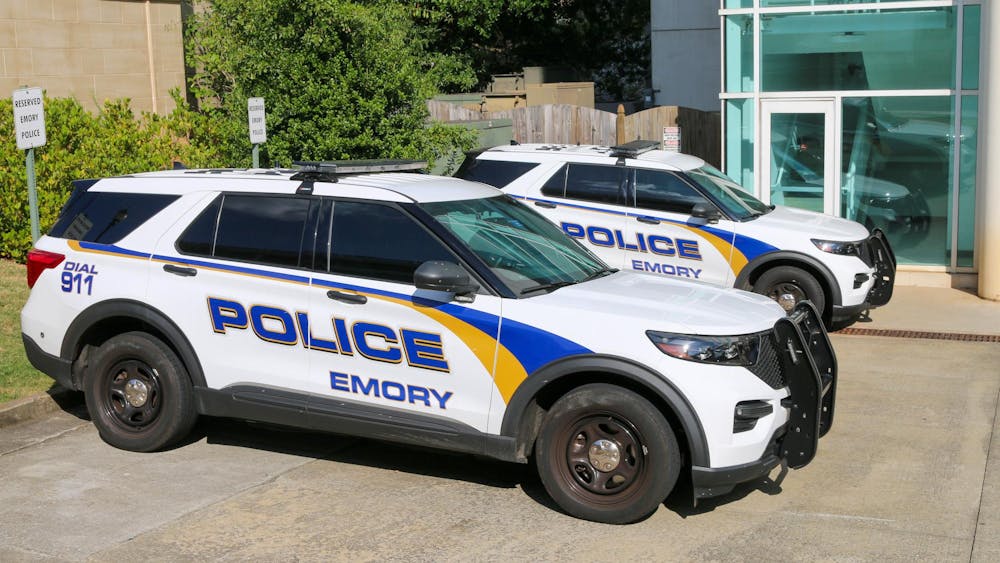Winship Cancer Institute at Emory Midtown will open on May 9 as the 12th Winship location. The new facility will include integrative resources for patient care and will be Emory University Hospital Midtown’s main location for cancer care and research. The official ribbon-cutting ceremony was held on May 2.
The 17-story, 455,000-square-foot tower is located on Linden Avenue and Peachtree Street. Construction cost approximately $469 million, and the Robert W. Woodruff Foundation contributed $200 million for the project.
Winship Cancer Institute Chief Administrative Officer Kim Kerstann (03G) said that the new location will create an efficient way for patients to get treatment, as many currently have to go to separate offices for each aspect of their care, such as seeing their doctor and getting their chemotherapy infusion.
Unlike the Clifton campus, all components of patient care — inpatients, outpatients, radiology, radiation oncology, operating rooms and supportive care services — will be in the same building at the Midtown location, Winship Cancer Institute Executive Director Suresh Ramalingam said.
“This facility is also designed with the patient at the heart of the workflow,” Kerstann said. “Instead of our patients moving to where their care is, all the care comes to the patient.”
Winship Cancer Institute Deputy Director Adam Marcus added that bringing doctors and providers directly to the patient will make their stay a more seamless experience that will improve care efficiency and lead to better outcomes.
“Our slogan here is, ‘Where science becomes hope,’” Marcus said. “This tower that will open embodies the idea of hope. It really provides a unique environment for cancer care for our patients.”
Kerstann added that creating a scale model of the tower, which she called “cardboard city,” was a crucial part of the planning process.
“We actually built life-size replicates of each of the floors and then ran simulations through the building to see: Did the flow work? Are the rooms big enough?,” Kerstann said.

Winship Cancer Institute Chief Medical Officer Sagar Lonial (00FM, 00MR) said that upon receiving the Woodruff grant, the team was told to “create and build something that had never been seen or done before in oncology.” They took that mission to heart, Lonial said, visiting many cancer centers across the country, including locations at the University of Nebraska-Lincoln and The Ohio State University. During this time, the team learned the newest and greatest cancer innovations, Lonial said.
While other centers did have useful innovations, Lonial said that they did not have the full patient-centered care that the Winship building plans to deliver.
Lonial also explained how the team approached building the tower, stating that they built it “almost backward,” determining what facilities were needed and establishing a building design to accommodate those needs instead of the other way around.
“We actually took this as an opportunity to say, what's the ideal way for us to deliver patient care, and how would we build a building to support that,” Lonial said.
Ramalingam added that the new Winship location will be next to highways in the heart of Atlanta, which will maximize the ability for patients to get in and out of treatment. Additionally, the location will leverage all the resources available to the Emory University Hospital Midtown and offer an opportunity for Winship to develop a “high-class academic cancer care program.”
The project has been in the works for roughly six years, according to Ramalingam, with the planning process starting in 2016 or 2017 and construction starting in 2020.
Despite the COVID-19 pandemic and supply chain issues, the building plans were not delayed, and the scheduled opening is in line with the original plan, Ramalingam said.
“This is going to transform patient care in the state and beyond,” Ramalingam said. “We're excited about the care model. We're excited about what it means to reduce barriers for patients to receive world-class care right here in our city, and what it means for … our mission to discover cures for cancer and inspire hope for patients.”









